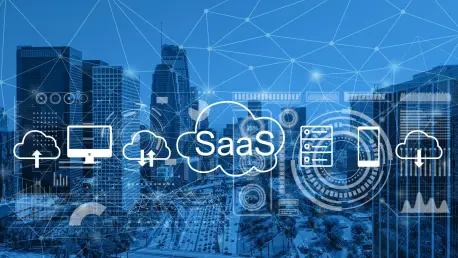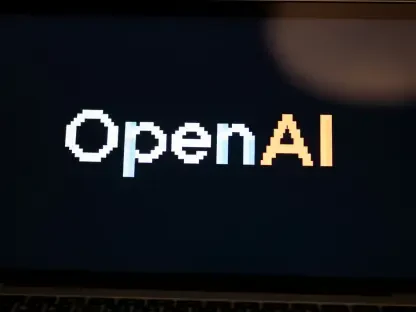There’s a quiet pressure building inside the SaaS economy—and no one’s really talking about it. While the headlines stay obsessed with generative breakthroughs and product-led growth, infrastructure is scaling unevenly, budgets aren’t keeping pace, and platform teams are racing to stitch together fragmented, AI-bloated stacks.
In short, SaaS is only scaling fast, not smart, and that comes with hidden costs no one’s penciling into their Q3 forecasts.
This article unpacks what most leaders are missing about post-AI scalability, how tech debt is being disguised as platform maturity, and why the real bottleneck is foundational capacity.
AI—a Force Multiplier on Workloads
SaaS teams used to roll out new functionality in sprints. Today? They’re rolling out machine learning-powered workflows, dynamic decision engines, and multimodal inference endpoints, often all in the same release cycle.
This results in workload intensity spiking across the board. What used to be simple Create, Read, Update, and Delete operations (the four fundamentals that form the backbone of how people interact with persistent data in applications) are now real-time streaming tasks enriched with user telemetry, large language model classification, and automated recommendations.
Gartner predicts that worldwide GenAI spending will reach $644 billion in 2025. Despite this surge, fewer would have scaled the infrastructure to sustainably support it. That disconnect shows up fast: latency creeps in, costs balloon, and observability gaps widen.
And the pressure compounds downstream. Because once you give users AI-powered features, they start expecting real-time performance, explainable output, and continuous uptime. Scaling to that level becomes a business challenge.
And if your backend can’t carry that weight? AI, the differentiator you hoped for, becomes a drag.
The Unbudgeted Cost of “AI Sprawl”
Here’s what no one tells you at the AI integration stage: every new model you onboard, every real-time loop you build, becomes a long-term compute tenant.
Although they are thought to be passive, they are living systems that constantly query, evaluate, retrain, and feed back into your platform.
AI sprawl happens when these systems start to accumulate without architectural alignment. You add one model to power searches. Another to flag risk. A third to predict churn. And before long, you’ve got five inference engines, seven pipelines, and three monitoring dashboards all scaling independently of your core platform design.
The result is zombie services, invisible spend, platform fatigue, and an ops team stuck duct-taping things together under a sprint cycle that was never designed for system-wide orchestration.
A recent CloudZero report indicates that a majority of SaaS companies significantly underestimated their AI infrastructure costs in 2024, with some of those firms reporting cost overruns. The miscalculation isn’t in computing alone but also in data storage, observability overhead, and internal bandwidth burn.
Which leads to the next problem: your modularity might be killing you.
Modular SaaS Was Supposed to Free You
The industry told you that modular architecture was the answer. Break up the monolith, separate concerns, and embrace plug-and-play composability.
But here’s the catch: every module you spin up introduces more points of failure, more states to manage, and more coordination debt. And in AI-enabled environments, each microservice is likely dependent on its own data pipeline, inference cache, or trigger set.
That’s not just complexity—it’s fragility. SaaS leaders are starting to realize that hyper-modularity without orchestration becomes chaos. And chaos doesn’t scale, not cleanly, not safely.
Businesses are seeing the ripple effects now as:
Deployment frequency is rising, but so are rollback rates.
Observability tools flood dashboards, but the contextual root cause remains elusive.
Costs move out of dev budgets and into infrastructure’s blind spot.
Suddenly, modularity isn’t freeing—it’s fragmenting. And platform teams are stuck mediating between speed and control.
This is where smart enterprises are changing the game.
Rebuilding the Stack for SaaS-AI Convergence
Enterprises that are scaling sustainably are rebuilding the SaaS core with the following three clear mandates:
MLOps-first workflows. Model deployment should not be isolated from product engineering. Leading teams integrate MLOps directly into CI/CD pipelines, treating models like any other piece of production software, complete with versioning, monitoring, and rollback policies.
Cost-aware architecture. AI inference is not a fire-and-forget task. Every prediction carries infrastructure weight. That’s why forward-leaning SaaS companies are incorporating cost telemetry into feature design, asking hard questions about which tasks need real-time processing and which can be deferred.
Unified observability across data, models, and infrastructure. Modern observability platforms like Honeycomb, Chronosphere, and Datadog are moving beyond logs and metrics. They’re tying data lineage, inference results, and infrastructure health into a single contextual layer, letting teams trace the performance impact of AI features across the stack.
This is what separates scale from sprawl: alignment. And alignment is becoming the real competitive edge in SaaS.
The CFO Is Now Part of the Architecture Team
AI has changed not only what SaaS tools can do, but also what it costs to do so. As vendors push deeper into AI-powered experiences, CFOs are stepping in as strategic design partners.
That means asking new questions, such as:
What’s the total lifecycle cost of this ML model?
How does this feature affect long-term cloud spend per user?
Can you segment AI workloads to cheaper or idle compute instances?
Are you over-retaining telemetry or training data?
Cost management is an engineering discipline, and smart SaaS companies are embedding financial operations tooling right alongside continuous integration or delivery pipelines, letting teams forecast infrastructure impact before committing to code.
In the era of generative differentiation, fiscal efficiency is the new performance layer.
What Scalability Really Means in 2025
Beyond handling more users, SaaS scalability means doing more per user, with less architectural friction. And that means rethinking what scale actually looks like, thus:
Building platforms that degrade gracefully when models fail or latency spikes.
Investing in foundational observability.
Knowing when to slow down, consolidate services, and cut zombie workloads.
Most importantly, it means owning the cost of intelligence. If your platform can’t scale the insight, automation, and context intelligently, then it isn’t really scaling.
The Bottom Line
There’s a storm brewing under the surface of SaaS growth, and beyond a lack of features, talent, or customers, it is a lack of scalability consciousness.
You can’t build AI-powered SaaS on yesterday’s assumptions. The workloads are heavier. The data is noisier. The expectations are higher. And the cost of every architectural decision has become apparent.
So before you ship the next intelligent feature, keep this question in mind: Is your platform designed to carry the intelligence you’re expecting?









